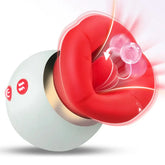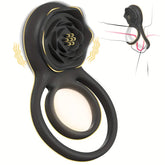The Cultural Impact of the Rose Toy: How It’s Redefining Perceptions of Sex Toys
In a world where conversations about sexual wellness are often shrouded in stigma, the Rose Toy has emerged as a cultural icon—one that’s challenging outdated taboos and reshaping how society views intimacy products. More than just a pleasure device, this elegantly designed toy has become a symbol of empowerment, inclusivity, and progressive attitudes toward self-care. But how exactly is the Rose Toy influencing cultural narratives around sex toys? Let’s explore its transformative role.

Breaking the Taboo: From Secrecy to Celebration
For decades, rose toys were relegated to the shadows, dismissed as “naughty” or “shameful” indulgences. The Rose Toy, however, has flipped this script. Its sleek, floral-inspired design and mainstream appeal have made it a conversation starter rather than a secret to hide. By blending aesthetics with functionality, the Rose Toy has normalized the idea that pleasure devices can be both beautiful and purposeful.
Social media has been pivotal in this shift. Platforms like Instagram and TikTok are flooded with candid posts showcasing the Rose Toy as part of self-care routines, gift guides, and even home decor (yes, some users proudly display it on their nightstands!). This visibility has dismantled the notion that sex toys are something to be ashamed of, reframing them as tools for confidence and well-being.
Empowerment Through Inclusivity
The Rose Toy’s cultural impact extends beyond aesthetics—it champions inclusivity. Unlike many traditional rose toy marketed narrowly to cisgender women, the Rose Toy’s design and branding embrace a diverse audience. Its gender-neutral appeal and focus on universal pleasure have resonated with people of all genders, sexual orientations, and relationship statuses.
This inclusivity mirrors broader societal shifts toward recognizing sexual autonomy for all. Influencers and advocates from LGBTQ+ communities, for example, have praised the Rose Toy for its versatility and ability to cater to different bodies and desires. By doing so, it reinforces the idea that pleasure is a human right, not a privilege limited by identity.

Sexual Wellness as Self-Care
Adult toys the rose toy has also tapped into the booming “self-care” movement, positioning itself as a wellness essential rather than a taboo gadget. Brands and users alike now frame sexual satisfaction as a vital component of mental and emotional health. This messaging aligns with modern attitudes that prioritize holistic well-being, from meditation apps to skincare routines.
Bloggers and health professionals have even begun discussing the Rose Toy in the context of stress relief, body positivity, and mindfulness. By linking pleasure to self-care, the product has helped destigmatize sex toys and integrate them into mainstream wellness culture.
Mainstream Media and Celebrity Endorsements
The Rose Toy’s cultural clout has been amplified by its presence in mainstream media and celebrity circles. Talk shows, podcasts, and lifestyle magazines now feature the toy in segments about relationships and health, treating it with the same legitimacy as fitness gear or beauty products.
Celebrities and influencers openly endorsing the rose pleasure toy have further normalized its use. When public figures share their experiences—whether joking about it on a late-night show or praising it in a heartfelt Instagram post—it sends a powerful message: there’s no shame in prioritizing pleasure.
Challenging Gender Stereotypes
Historically, rosesex toys were often marketed with gendered stereotypes (think phallic designs or hyper-feminized packaging). The Rose Toy’s abstract, artistic design avoids these tropes, appealing to a broader audience. Its success challenges the industry to move beyond outdated marketing tactics and embrace creativity that transcends gender norms.
This shift is particularly impactful for men and non-binary individuals, who are often excluded from conversations about intimate wellness. By rejecting gendered labels, the Rose Toy fosters a more inclusive dialogue about pleasure.

The Ripple Effect on the Industry
Blue rose toy cultural influence isn’t just changing perceptions—it’s pushing the entire industry to evolve. Competitors are now prioritizing discreet designs, body-safe materials, and inclusive marketing to keep up with consumer expectations. Additionally, retailers are increasingly stocking pleasure products in mainstream stores, signaling societal acceptance.
Perhaps most importantly, the Rose Toy has inspired open conversations about consent, communication, and sexual health. Workshops, online forums, and even dating apps now incorporate discussions about intimacy tools, reflecting a cultural shift toward transparency and education.

The Road Ahead
While the Rose Toy has made remarkable strides, cultural transformation is an ongoing process. Some communities still face barriers due to lingering stigma or lack of access. However, the toy’s success proves that demand for progressive, shame-free intimacy products is growing—and the industry is listening.
Final Thoughts
Rose charger isn’t just a product; it’s a catalyst for cultural change. By normalizing conversations about pleasure, championing inclusivity, and aligning with wellness trends, it’s helping to dismantle outdated taboos one petal at a time. As society continues to embrace sexual autonomy and self-care, the Rose Toy stands as a reminder that intimacy is not just natural—it’s worth celebrating.
What do you think about the cultural shift surrounding sex toys? Has the Rose Toy influenced your perspective? Join the conversation below! ✨



